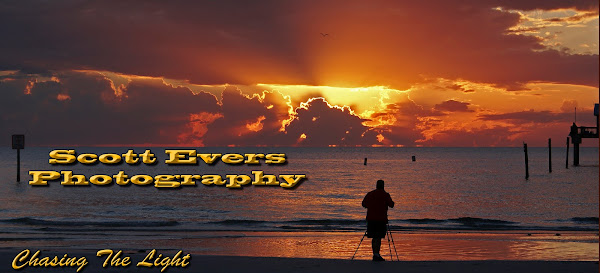There are countless amazing locations to photograph wildlife in Florida. There are dozens of books and publications that cover everything you would want to know on the subject. I regularly visit one of the top rated bird photography spots in the country. It is located on Sanibel Island, off the coast of Ft. Myers. J.N. "Ding" Darling National Wildlife Refuge is a bird photographer’s paradise. I have made the trip to this place at least once or twice a year for the past five years. I usually spend several days photographing the diverse bird population that can be found there.
One of the big attractions at the refuge is the large colony of American White Pelicans that come to winter and start their breeding season. It is fun to watch these large birds come crusing in for a landing in the shallow waters to feed or rest. They are a good target to practice your in-flight photography skills on as they are very large and do not move erratically like many birds do. They will winter as far north as the St. Louis area. You can see them in the Riverlands Wetland Area over in West Alton.
Another favorite target of mine is the numerous Ospreys that are found in the refuge. The Osprey (Pandion haliaetus), sometimes known as the sea hawk, is large raptor reaching 24 inches in length with a 5-6 foot wing span. It is brown on the upperparts and predominantly greyish on the head and underparts, with a black eye patch and wings. Fish make up 99% of their diet. They are efficent hunters and have hugh curved talons for grabbing fish just below the surface of the water.
This photo is of a Female Common Merganser Duck. The long, narrow bill with serrated edges readily distinguishes mergansers from all other ducks. Common mergansers are among the largest ducks, but are less stocky than eiders and goldeneyes. In flight, they appear more elongated than other ducks, flying in trailing lines close to the water's surface. Male common mergansers have a greenish-black crested head and upper neck. The lower neck, breast and underparts are creamy-white with a variable pink wash. They have black backs and upperwing coverts with white scapulars. The bill is red with a blackish culmen and nail. The legs and feet are a deep red. Female common mergansers have a tufted red-brown head that is clearly defined from the lower neck by a clear whitish chin. The back and sides are silver-gray and the breast and belly are white. The bill is red with a blackish culmen and nail. The legs and feet are deep red.
Although the weather has been less than ideal for my entire week in Florida, It was still better here than in St. Louis. But the sun has set on my final day here and I will be returning home on Saturday.
Have a great weekend.
Scott






Scott,
ReplyDeleteThanks for all the photos from Florida!
How did Mr. Darling get a nickname of "Ding"?
See you back in Edwardsville, IL
We get back late Monday evening
It's supposed to be in the mid 60's in Oregon tomorrow!
Dan